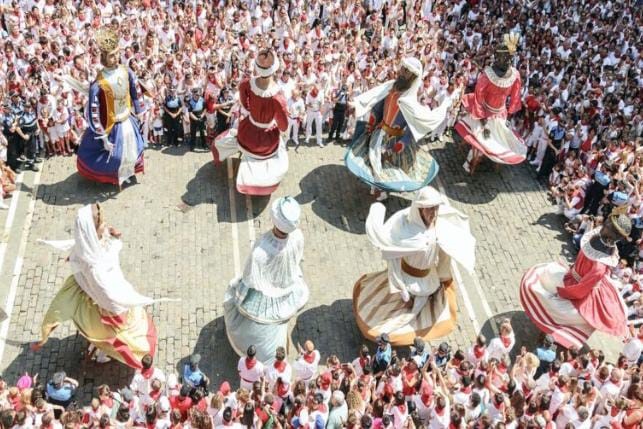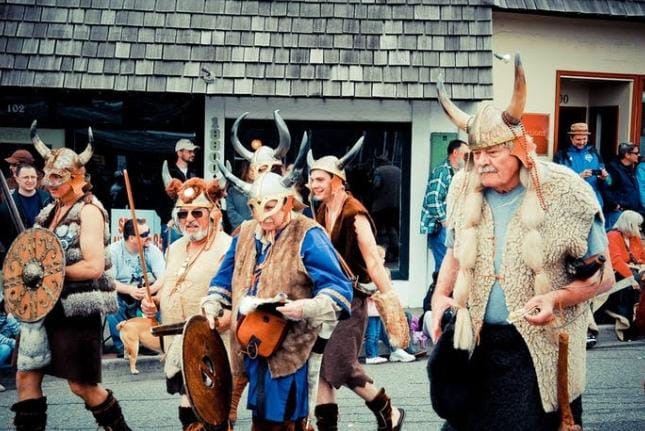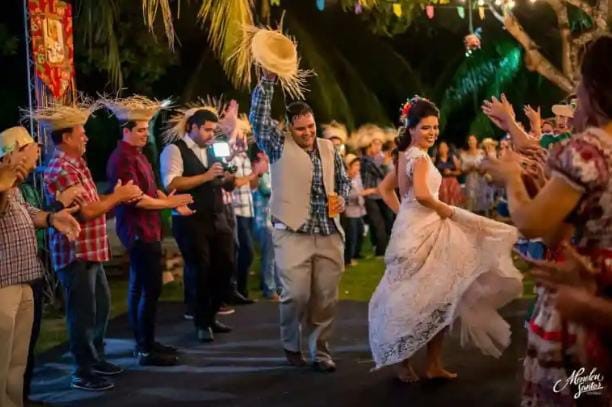
Eastern European marriages provide a fascinating window into the intricacies of culture and society. They are steeped in tradition, shaped by modern influences, and serve as a cultural exchange and integration platform. Understanding Eastern European marriages and their contribution to cultural diversity is essential for appreciating the rich tapestry of this region’s heritage.
Understanding Eastern European Marriages
Eastern Europe is a diverse region, encompassing countries such as Poland, Hungary, Romania, and Ukraine. Marriage customs and traditions vary widely within this vast expanse, reflecting each nation’s unique history and culture. Through these variations, we can discover the role of tradition and modern influences in shaping Eastern European marriages.
The Role of Tradition in Eastern Europe Marriages
Tradition holds a deep-rooted place in Eastern European marriages. Throughout history, customs and rituals have played a significant role in formalizing the union between two individuals. From elaborate pre-wedding rituals to folk dances and traditional attire, these customs symbolize the bond between a couple and showcase the region’s cultural heritage.
Take, for instance, the Polish tradition of “Oczepiny,” where the bride’s veil is replaced with a married woman’s cap to signify her transition from singlehood to marriage. A lively celebration, complete with music, dancing, and heartfelt speeches, accompanies this tradition. The joy and excitement that fill the air during these festivities are contagious, bringing families and communities together to honor the couple’s union.
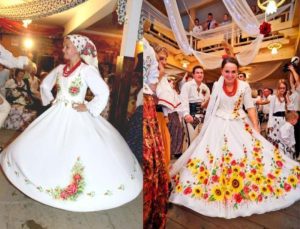
In Hungary, the wedding ceremony often includes the “Csángó” dance, a traditional folk dance that symbolizes the unity and harmony between the bride and groom. The dancers’ intricate steps and synchronized movements reflect the couple’s commitment to navigating life’s challenges together, supporting and complementing each other.
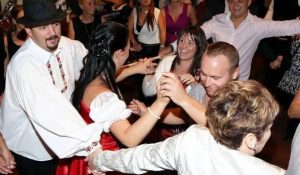
Similarly, the wedding celebration in Romania is a vibrant display of cultural pride. The bride and groom exchange vows in front of their families and friends, surrounded by traditional music and colorful decorations. The “Hora,” a traditional Romanian circle dance, is integral to the festivities, symbolizing unity and joy. As the guests join hands and dance in a circle, the couple is embraced by the love and support of their loved ones.
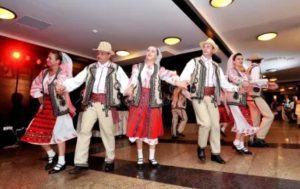
These rituals bring joy and excitement and serve as a connection to ancestral roots and a way of preserving cultural identity. They remind individuals of their heritage and the values passed down through generations, fostering a sense of belonging and pride.
Modern Influences on Eastern European Marriages
In recent years, Eastern European marriages have also been influenced by modern trends and changing societal dynamics. The advent of globalization and the ease of travel and communication have introduced new ideas and practices, creating a blend of tradition and innovation within marriage customs.
Couples today often incorporate elements from different cultures into their wedding ceremonies, embracing a more inclusive and diverse approach. Interfaith marriages, for example, have become more common, highlighting the acceptance and openness that Eastern Europe embraces in the modern era. These unions combine beliefs and traditions, creating a harmonious blend that celebrates love and unity.
Furthermore, the influence of social media and technology has transformed how Eastern European marriages are planned and celebrated. Couples can now connect with wedding planners, photographers, and vendors through online platforms, making the process more efficient and convenient. Personalized wedding websites and hashtags have also become popular, allowing couples to share their journey and memories with friends and family across the globe.
Moreover, the concept of gender roles within marriages has evolved. Eastern European societies are shifting towards more egalitarian relationships, where partners share responsibilities and decision-making. This change reflects the changing dynamics of gender equality and the desire for mutual respect and support within marriages.
While tradition remains a significant aspect of Eastern European marriages, the influence of modern trends and societal changes has added complexity and diversity. The blending of tradition and innovation creates a rich tapestry of customs and practices, reflecting the region’s ability to adapt and embrace new ideas while cherishing its cultural heritage.
The Intersection of Marriage and Culture in Eastern Europe
Marriage is a fundamental institution that reflects the values and beliefs of a culture. In Eastern Europe, marriages mirror societal norms and traditions, acting as a bridge between generations and preserving cultural heritage.
How Marriages Reflect Cultural Values
Eastern European marriages are deeply intertwined with cultural values. Gender roles, family structure, and societal expectations are all reflected in how marriages are conducted and celebrated. For instance, in countries like Romania, where family ties hold immense importance, marriage often extends beyond the couple to encompass the joining of two families, symbolizing unity and support.
Understanding these values deepens our knowledge of Eastern European society and challenges us to appreciate the significance of marriage as a cultural institution.
The Impact of Cultural Diversity on Marital Practices
Cultural diversity adds vibrancy and richness to Eastern European marriages. As the region becomes more interconnected, individuals from various backgrounds come together in matrimony, bringing their customs, traditions, and rituals with them.
This infusion of diversity broadens our understanding of different cultures and challenges societal norms, fostering an environment of acceptance and mutual respect. The Eastern European region continues to thrive through experiencing and embracing cultural diversity in marriages.
The Contribution of Marriages to Cultural Diversity
Eastern European marriages do not exist in isolation; they profoundly impact cultural diversity. Through marriages, cultures mix and intertwine, allowing for exchanging ideas, traditions, and practices. This fusion creates a unique blend of customs, symbolizing Eastern European society’s dynamic nature.
Marriages as a Platform for Cultural Exchange
Marriages act as a platform for cultural exchange, enabling the sharing of customs and traditions between couples from different backgrounds. From food and music to language and fashion, these exchanges foster mutual understanding, breaking down barriers and building bridges between communities.
Imagine a Romanian couple and a Hungarian couple coming together in marriage, merging their cultural heritage to create a shared experience that embraces both traditions. This fusion strengthens the bond between individuals and enriches the cultural fabric of Eastern Europe.
How Marriages Foster Cultural Integration
Marriages play a crucial role in fostering cultural integration within Eastern Europe. As couples navigate their shared lives, they are faced with the task of melding their respective traditions and adapting to the beliefs and practices of their partner.
This process of cultural integration leads to a more vibrant and inclusive society, where individuals and communities learn from one another, shaping a collective identity built upon respect and understanding. Eastern European marriages preserve cultural diversity and actively contribute to its evolution.
The Future of Eastern Europe Marriages and Cultural Diversity
The landscape of Eastern European marriages is continuously evolving, driven by societal changes, global influences, and shifting attitudes. As we look towards the future, we must consider the potential impact of these changing trends on cultural diversity.
The Evolving Dynamics of Eastern European Marriages
In recent years, Eastern Europe has witnessed an increase in non-traditional relationships, such as cohabitation and civil partnerships. These evolving dynamics challenge traditional notions of marriage and redefine how individuals express their commitment to one another.
As attitudes towards relationships shift, fostering an environment that respects and values these diverse expressions of love and commitment is crucial. By doing so, Eastern Europe can maintain its rich cultural diversity while adapting to its people’s changing needs and desires.
The Potential Impact of Changing Marital Trends on Cultural Diversity
While change brings about exciting possibilities, it is crucial to consider the potential impact on cultural diversity. As attitudes towards marriage continue to evolve, there is a risk that some traditional customs and practices may fade away, leading to a loss of cultural heritage.
However, it is essential to emphasize that cultural diversity is a dynamic and resilient force. Just as traditions have adapted and evolved throughout history, they will continue to do so in the face of changing marital trends. The region can ensure a vibrant and diverse future by embracing these changes while preserving the essence of Eastern European culture.
Conclusion
Eastern European marriages are not merely a union between two individuals but a celebration of culture and heritage. Tradition and modern influences coexist, creating a tapestry of rituals that reflect the values and beliefs of this diverse region. Marriages are a cultural exchange and integration platform, fostering acceptance and mutual understanding. As Eastern Europe navigates the complexities of the future, maintaining cultural diversity while embracing changing marital trends will be crucial. By doing so, this region can ensure that marriages continue contributing to Eastern Europe’s vibrant and evolving cultural diversity landscape.

